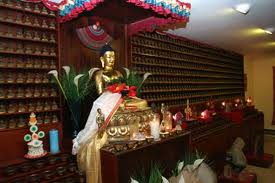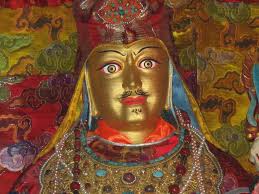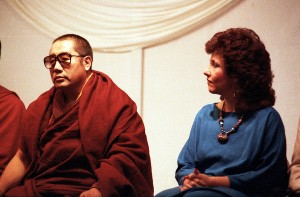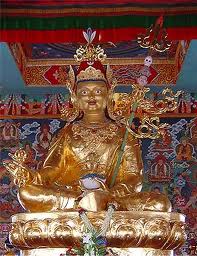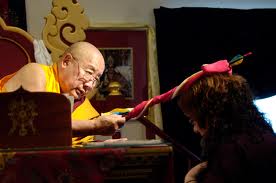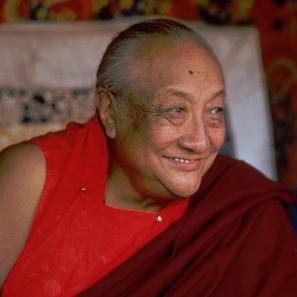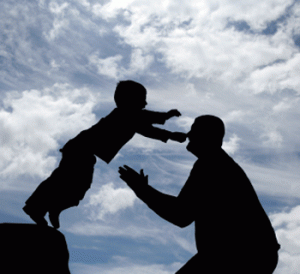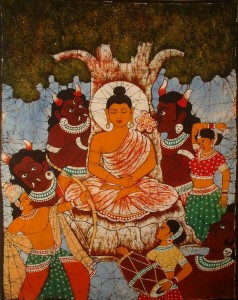The following is an excerpt from a teaching called “The Guru is Your Diamond”
If our teachers had not accomplished any Dharma, how would they be of any use to us? So we expect it of them and we rely on them to guide us in the way of Dharma. Sometimes it pisses us off. We’d rather go on vacation. We’d rather have a little more fun. I mean, it’s Sunday afternoon, isn’t it? And we have all kinds of reasons why we should maybe do something else, but we come back. There is my friend. If this teacher can bother to appear again and again for no reason other than to liberate sentient beings as my guru has, then I can at least be here. I can at least come half way, come full with devotion. When we are in the presence of our own root guru and we have that connection and we have the history and karma of the guru having ripened our mind in some way in the past, that ripening will surely come again. With faith and devotion and practice, it will surely come again. And so we have that kind of faith. We know in our hearts and our minds that we can rely on this one for that kind of help.
Should it happen that we cannot meet with the guru for some reason, or there is some difficult point in one’s path, some difficult moments, some difficult times, maybe even some difficult months or years, still, so long as the guru remains in the world, we can turn our face towards the guru and know. It’s like falling off a horse. You can always get back on.
But the problem, and there is a problem with that, is that if you waste your time with that precious jewel and don’t collect its interest, the jewel somehow becomes more distant, less potent, less present, less precious, less everything. And we think to ourselves, ‘Why is the guru not in my life so much?’ And we tend to think, ‘Oh, it’s because the guru’s over here or the guru’s over there, or the guru is not speaking right now, or the guru is this, or the guru is that.’ And you can think that way if you want to but it won’t help. We must think, ‘Now I’ve come to this place. I have chosen my guru and I am steadfast. And I have seen the door of liberation. Yet somehow things are a little mixed up here, I can’t quite get to it. I don’t feel focused. I don’t feel like I understand this blessing. I feel outsourced. I feel like I’m out to lunch somewhere on the Path here.’ And so we think, ‘Oh, what is the problem?’ Well, the first thing we have to do is correct our view and think, ‘This is the door to liberation. It is present in the world.’ Period. End of story. ‘What must I do? What must I do?’
Sometimes it takes traveling to see your guru. Sometimes it takes sitting down and doing Guru Yoga like you never did it before. And it can work out a myriad of ways according to one’s karma, according to one’s blessing. I’ve had it both ways. I’ve traveled to see my guru and the blessing was immeasurable and phenomenal. And then I’ve stayed home and practiced Guru Yoga and with amazing signs. The blessing was amazing and fundamentally life changing. And one, I saw the guru’s face; and one, I saw the guru’s face.
And that’s the nature of this blessing. It doesn’t depend on time and space. It doesn’t depend on ordinary things at all. And unless you neglect it, it cannot lose its potency. We must think, as pertaining to Guru Yoga, that every day, even while now we sit in comfort and enjoy being together, that every day, even this day, we should earn the blessing to see the guru tomorrow. How will I see the guru? Maybe I’ll see the guru’s picture and it will jump out at me and touch my heart. Maybe I’ll see Guru Rinpoche’s picture and it will jump out at me and touch my heart. Or maybe I’ll say The Seven Line Prayer. And wow, that one really…, that one did it. Or maybe I will do my practice and it feels deep and rewarding like an underground stream that has come suddenly to the surface and has given us something precious to drink.
Copyright © Jetsunma Ahkon Lhamo. All rights reserved
